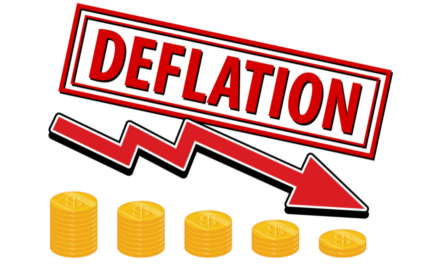Inflation refers to the general rise in prices of goods and services over time, which reduces the purchasing power of money. While moderate inflation signals economic growth, uncontrolled inflation, including extreme cases like stagflation, hyperinflation, and deflation, can lead to instability. Sometimes inflation is not only what we hear negatively impacts the economy; sometimes, it is good for the economy as well. This article explores the causes, consequences, and effects of inflation on individuals and the economy.
Causes Of Inflation
- Demand-Pull Inflation
Demand-pull inflation occurs when demand for goods and services exceeds supply. This often happens during periods of economic growth, when rising incomes and employment fuel consumer spending. As demand outstrips supply, businesses raise prices to balance the economy.
- Cost-Push Inflation
Cost-push inflation occurs when production costs rise, causing businesses to increase prices to maintain profitability. Key drivers include rising wages or higher raw material costs. For example, a spike in oil prices raises transportation costs, affecting the overall price of goods.
- Monetary Expansion
Excess money supply can also drive inflation. When central banks print more money or lower interest rates, it increases the amount of money in circulation, driving up demand and prices. Hyperinflation can occur if money printing spirals out of control, as seen in countries like Venezuela and Zimbabwe.
Consequences Of Inflation
- Reduced Purchasing Power
Inflation erodes the value of money, meaning consumers can buy less with the same amount. If wages don’t keep up with rising costs, households face reduced living standards.
- Uncertainty and Investment Risk
High inflation creates uncertainty, making it harder for businesses to plan and invest. Companies may delay investments, slowing economic growth. Inflation also devalues savings, making it harder to protect wealth.
- Rising Interest Rates
Central banks typically raise interest rates to control inflation, making borrowing more expensive. This curbs consumer spending and business investment but also increases debt costs for those with loans.
- Wage-Price Spiral
As prices rise, workers demand higher wages to keep up with the cost of living. Businesses, in turn, raise prices to cover higher wage expenses, fueling a cycle of rising wages and prices.
- Wealth Redistribution
Inflation can shift wealth, benefiting borrowers who repay loans with devalued money while harming savers and those on fixed incomes, whose money loses value over time.
How Inflation Is Managed
- Monetary Policy
Central banks control inflation through interest rates and the money supply. By raising interest rates, they reduce spending and borrowing. Through open market operations, they buy or sell government bonds to manage liquidity.
- Fiscal Policy
Governments can reduce inflation by cutting public spending or increasing taxes, both of which lower demand in the economy and slow inflation.
- Supply-Side Reforms
Addressing cost-push inflation involves improving the economy’s efficiency, such as through infrastructure investment or deregulation, to reduce production costs.
Inflation, when controlled, reflects a growing economy. However, high or unpredictable inflation can erode purchasing power, create economic uncertainty, and lead to challenging policy decisions. Understanding its causes and effects helps in managing economic stability and ensuring growth.





